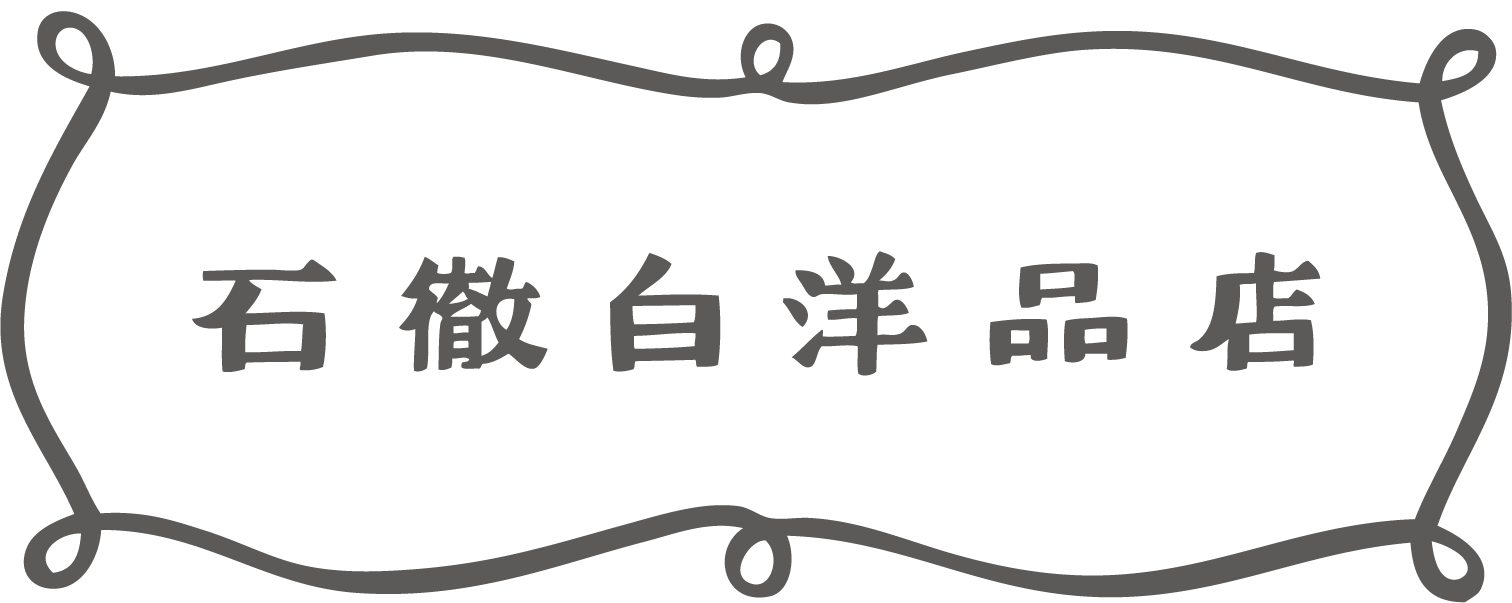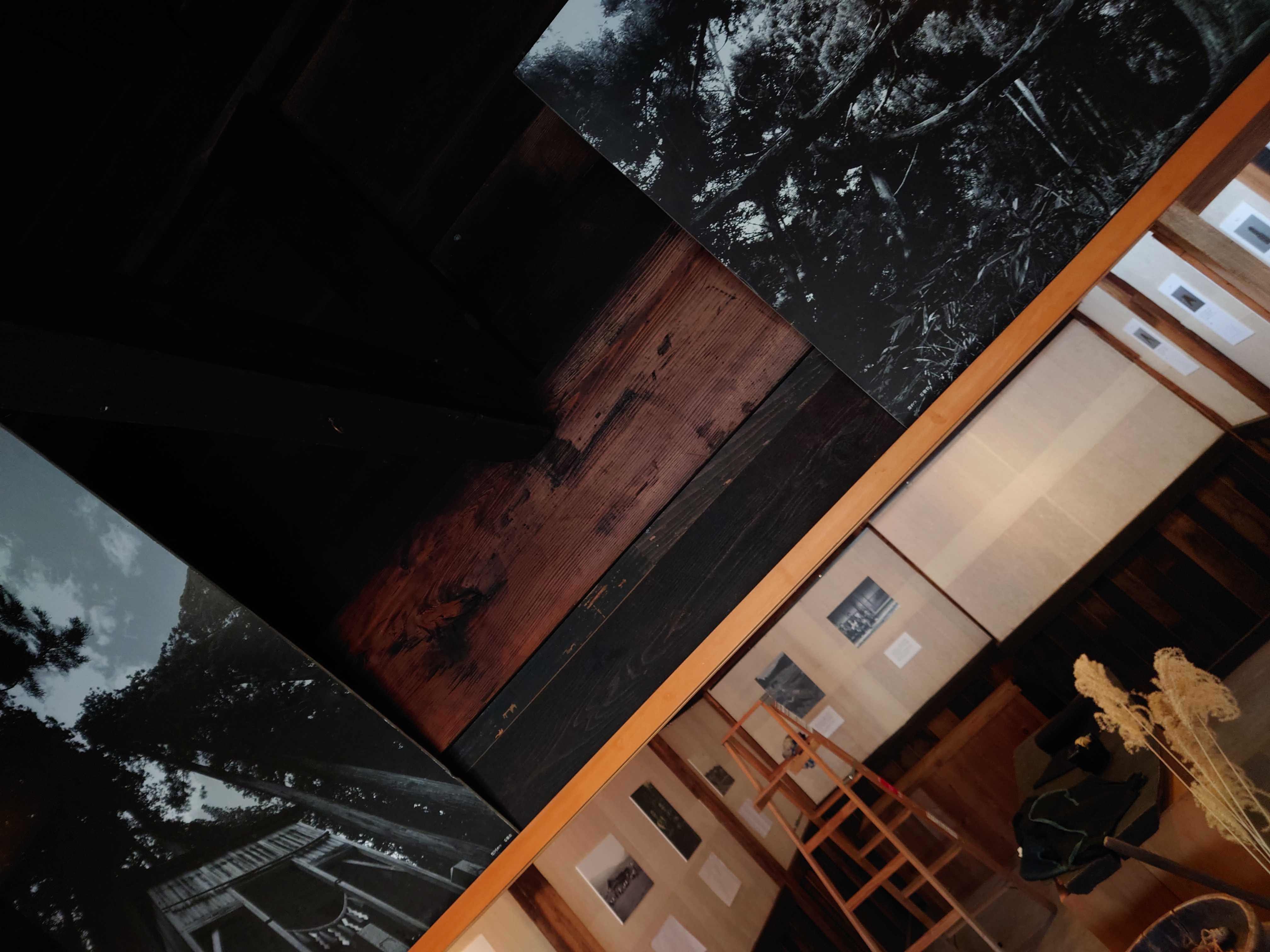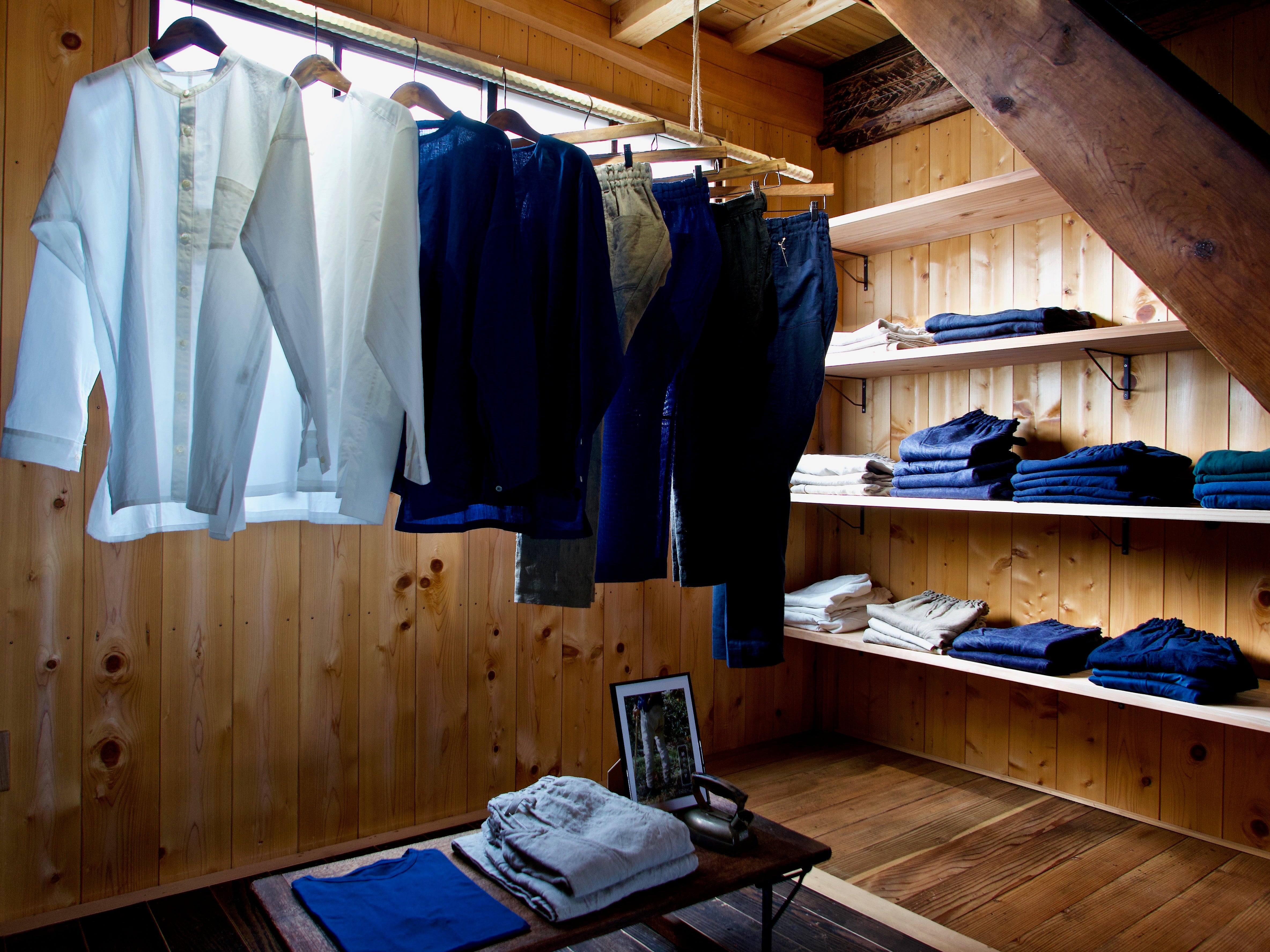The preparation of indigo and the reason for indigo dyeing
This year's indigo preparation has begun.
We started indigo dyeing in 2017, and this year marks our sixth year.
This year I am in charge of indigo, so I was excited and nervous for the first time in a long time when this time came.
What got me started with indigo dyeing was some old clothes I had.

Almost all old linen clothes are indigo dyed, even though it's cold here and indigo doesn't grow there, and records from the Taisho period list indigo as a crop grown in the fields.
It is not clear when indigo cultivation and indigo dyeing began here, but it is certain that the dye was necessary for survival as it was used to ward off insects and vipers.
When I first started thinking about trying indigo dyeing, through various connections I was introduced to Mr. T, who has been working with indigo in Gujo for over 50 years, and was able to start an indigo farm.
I call him my first Ai master.
I was taught how to grow indigo in the fields.

After that, I learned everything from indigo dyeing to indigo dyeing from Minato-san, who has been working with indigo for over 30 years in Ono City, neighboring Fukui Prefecture. He became my second indigo dyeing master.

Everything came together at the right time, and now I am able to dye with four indigo vats.
It's not something I've done alone, and it's really amazing, but I've been able to do this thanks to the cooperation of so many people. That's why I want to share this joy and experience, and I've started an activity called "Ainoha Trust" with natural farmer Yoritaka Okamoto. (I'll post about this on my blog later.)
Indigo dyeing is not an easy thing to do.
Growing indigo is difficult for me as I am not a farmer, and it is a task that requires an enormous amount of time and physical strength, from preparing the indigo, to dyeing, maintaining the indigo vats, and finally cleaning.

Still, I love the color indigo so I continue.
In addition, for me, indigo dyeing, like "tatsuke," is a way to learn and practice the wisdom accumulated by the ancestors of this land, and it is essential for me to feel connected to this land and to my ancestors.
Touching the soil in the fields, sowing seeds and growing leaves, putting my hands in the indigo vat and feeling it on my skin... My hands get rough and rough, but even these things are precious to me, and I find myself thinking about the lives of my ancestors.
Furthermore, by doing indigo dyeing, I can connect with many people, and it somehow expands my circle of friends, which makes me very happy, fun, and warm.
Not only can you connect with people who like or are interested in indigo dyeing, but you can also share with people who actually do indigo dyeing various methods and ways of thinking, because the process is difficult. You can meet good friends who will share their hardships and wisdom.

So, as long as I can, I want to continue doing everything from growing indigo in the indigo fields to dyeing indigo, even if it's just a little bit every year.
I hope so.
I would also like to be able to spread the word about the wonders of indigo dyeing to as many people as possible.


